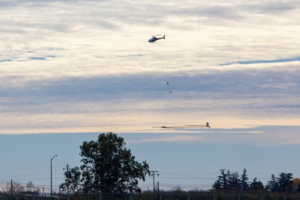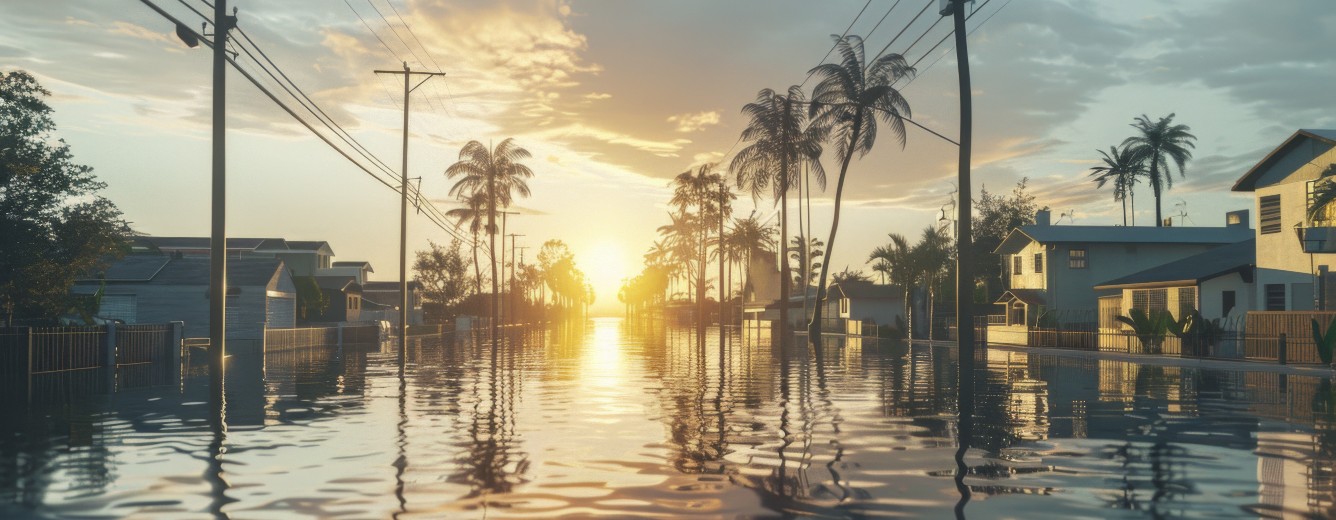After the three driest years in state history, California received the storms it was “hoping” for. California has had an uncharacteristically wet winter with record-breaking rainfall and snowpacks over two times the normal depth. All this water has caused dangerous flooding. Floods have damaged and destroyed billions of dollars’ worth of public and private property, displaced whole communities, and caused injury and even death. Despite this surplus of winter water, 36% of California is still in a drought (U.S. Drought Monitor). This paradoxical statement may have Californians scratching their head wondering where all the water went.
1. History of Flooding in California
Seasonal flooding in California is not a new story. Historically, snowfall in the Sierra mountains would melt and flow through rivers, streams and underground. This water would eventually cause flooding in the Delta and Central Valley forming a massive tule swamp. For example, in 1862 “The Great Flood” flooded Sacramento and the Central Valley forming a lake 300 miles long and 20 miles wide. In Southern California, flood water from the Colorado River would spill into and fill the Coachella and Imperial Valleys forming the prehistoric lake, Cahuilla, that would then take around 60 years to drain. Today, waterways are engineered to not flood. Rivers and streams are dammed, relocated, channelized, and managed. Likewise, floodplains and wetlands have been drained, filled, and paved over. Farmland and agricultural communities have popped up in these areas of historic wetland, and these communities often rely on groundwater for use at home and in agriculture. The constant need for groundwater and the lack of natural flood water refilling groundwater basins has left many California aquifers in a state of overdraft.
2. Groundwater Management

Flyover of a helicopter performing an airborne electromagnetic survey. Photo Source: https://water.ca.gov/programs/sgma/aem
In order to combat the lack of groundwater recharge and increase the state’s ability to capture and retain water, the “California Department of Water Resources has awarded $68 million to 42 groundwater recharge projects that provide nearly 117,000 acre-feet of potential recharge capacity…” (CADWR, 2022). Recharge sites and methods are chosen by local groundwater sustainability agencies (GSAs). Common methods include filling dedicated recharge basins or ponds, directing water to unlined canals and riverbeds, and/or injecting water through wells (PPIC, 2021). Locating adequate recharge sites is an emerging practice, and new methods and technology are proving invaluable. In 2020, California launched the Statewide Airborne Electromagnetic Survey Project. This project utilizes helicopters to tow electronic equipment that sends and receives signals. This method reveals subsurface geology and helps to better map and understand California aquifers.
3. Groundwater Management Response to Flooding
In light of recent storms, on March 9, “the State Water Resources Control Board approved a petition by the U.S. Bureau of Reclamation to divert over 600,000 acre-feet of San Joaquin River floodwaters for wildlife refuges, underground storage, and recharge. With this approval, the State Water Board has authorized nearly 790,000 acre-feet in diversions for groundwater recharge and other purposes since late December 2022” (CADWR). Furthermore, “Governor Newsom set forth in Executive Order N-4-23, the conditions under which water users may divert water for recharge without state permits. The [California] Executive Order suspends certain regulatory requirements under conditions of imminent risk of flooding” (CADWR). Both these actions aim to take advantage of floodwater by diverting water to groundwater recharge.
Conclusion
In times of drought, groundwater comprises 60% of California’s water supply and irrigates 80% of the crops in California. Groundwater is critical to both the people and economy of California. The Sustainable Ground Water Management Act (SGMA) was passed in 2014 to address aquifer overdraft and is California’s first attempt at groundwater management. Groundwater management is in its infancy and Regional Groundwater Sustainability Plans (GSPs) have only just been completed in 2022. This year’s storm will test groundwater management plans and what we learn will help guide management in the future.
Contact us today to help you with water resources and environmental planning at: hello@scoutenv.com.













